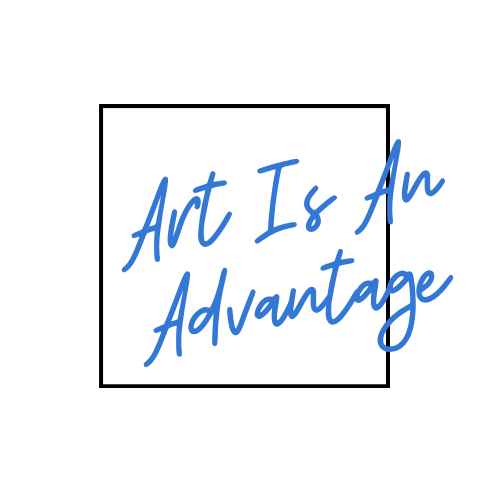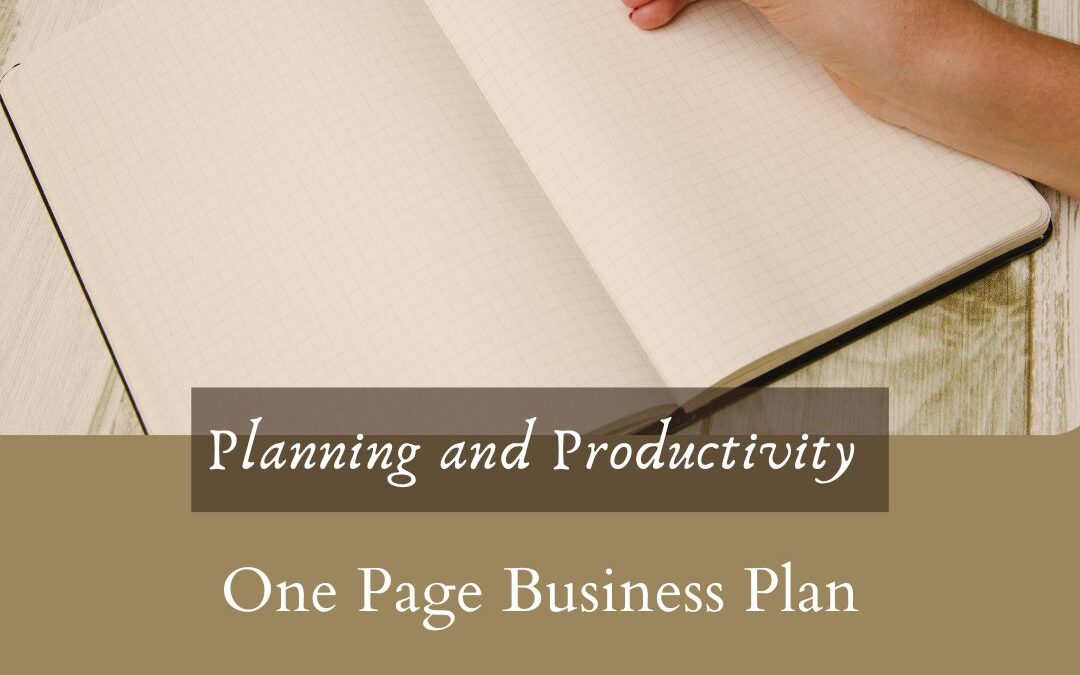
by Rebecca Sciullo | Jul 24, 2023 | Learning, Planning
Write A One-Page Business Plan for Your Art Business
Recently I was asked if I had a business planning template that I could offer to an artist. While I’ve attempted to create them over the years, the truth is that when I work with an artist on planning, I typically start from scratch for each artist. I don’t have a one-size-fits-all plan for my clients.
So, where does an artist start when making a business plan?
While you might be inclined to write a detailed plan, sometimes a concise and focused approach can be just as practical. You can start by mapping things out on one page, which is how I started working after reading Chris Guillebeau’s $100 Start Up several years ago. While it’s not specific to an art business, the book offers an excellent overview of how to map out a business on one page. And it puts you in a great frame of mind to start your planning.
Don’t Overcomplicate Things
While exploring how to create a one-page business plan specifically tailored to the needs of your art business, avoid bogging yourself down in too many details. Keep things simple while focusing on key points to keep yourself on track.
Outside of the template offered in The $100 Start Up, here are some other areas you can map out on one piece of paper.
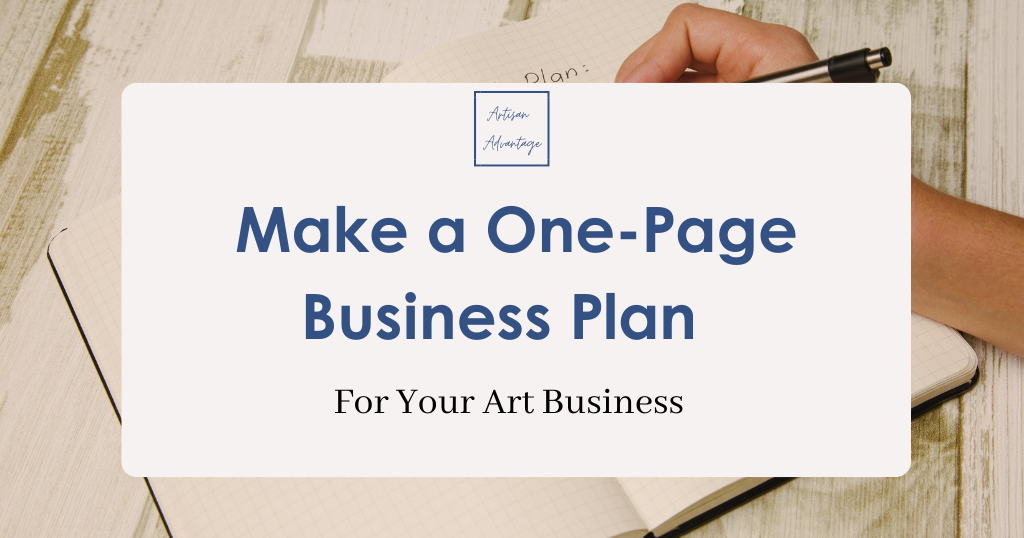 This post contains affiliate links which means I receive a small commission if you make a purchase using the link. For more information, see my full terms here.
This post contains affiliate links which means I receive a small commission if you make a purchase using the link. For more information, see my full terms here.
Here are some things to consider with your one-page plan.
Define Your Vision and Mission
Begin your one-page business plan by clearly defining your vision. Your vision is simply a picture of what you want your business to look like in the future. Make it concise, capturing what you want to accomplish and how you want to impact your audience or the art community. Remember, your vision can change over time. You are not locked into it, but having a starting point helps move you in the right direction.
Identify Your Target Audience
Understanding your target audience is crucial for any business, including art enterprises. Who are the likely people who will purchase your work? This will help you tailor your artistic style, marketing efforts, and communication strategies to resonate with your intended audience.
Artistic Offerings
What is it that you are offering or selling? Highlight what sets you apart from others and articulate the value it brings to your customers. Whether you specialize in paintings, sculptures, digital art, or other mediums, clearly define your artistic offerings.
Competitive Analysis
Conduct a brief analysis of the competitors within your chosen market. Understanding your competition enables you to refine your artistic style and marketing strategies to stand out in a crowded marketplace.
Marketing and Promotion Strategies
Outline your key marketing and promotion strategies on your one-page business plan. Consider online and offline channels, such as social media platforms, art exhibitions, galleries, art fairs, and collaborations with other artists or influencers. How will you get your work in front of people to move your business forward?
Financial Considerations
Even with a condensed business plan, you should include a brief overview of your financial considerations. Identify your art business’s revenue streams, pricing strategies, and anticipated costs or investments. While not exhaustive, this section will provide a basic understanding of the financial landscape of your enterprise.
Milestones and Action Steps
Specify the key milestones and action steps required to achieve your goals. Break down larger objectives into smaller, manageable tasks with realistic timelines. This will help you stay organized and track your progress as you work towards building your art business.
Evaluate and Adapt
Finally, acknowledge the importance of evaluating your progress and adapting your strategies. As an artist and entrepreneur, the art market is dynamic, and trends can change rapidly. Regularly review your one-page business plan, assess your results, and make adjustments to stay relevant and successful.
Providing Guidance and Structure to Your Business
A one-page business plan can be a powerful tool for artists looking to establish and grow their art businesses. By condensing the key elements of a traditional business plan into a single page, you can focus on the essentials while maintaining a clear direction for your artistic journey. Remember, the purpose of this plan is to provide guidance and structure while leaving room for your creative intuition and creativity to thrive. With a concise roadmap, you can confidently navigate the art market and pursue your passion while building a thriving and sustainable art business.
Would you like some direction for your art business? Read about my Art Business Review. where we can work to put a plan together or breathe new life into your creative venture.
Join my email newsletter for weekly art marketing tips, events, and more.

by Rebecca Sciullo | Jun 20, 2023 | Events, Learning, Planning, Productivity, Your Hub
Do you have a business plan for your art business? It might not be that unusual that you don’t. If you started selling your art as a side business and fell into it, as sometimes happens, you may not have one. Or, maybe you’ve been so busy working between producing work and marketing that you haven’t reviewed your plans in a while. The good news is that there is always time.

Reasons to consider writing or revamping your art business plan.
You need a strategic approach combining your artistic vision with a well-designed business plan to succeed. Here are some things a solid business plan will do for you.
A good plan ensures you to treat your art as a business. Many artists need help viewing their creative pursuits as a business, fearing that it might dilute their artistic integrity. Treating art as a business helps you to establish a professional framework, enabling you to focus on goals, identify target audiences, and allocate resources effectively.
Setting clear goals gives you a roadmap to success. By outlining your vision, then short-term and long-term plans, you can stay focused, measure progress, and adapt your strategies accordingly.
A business plan helps you to manage your finances. Your financial stability is vital for sustaining a creative endeavor. With a clear understanding of their finances, artists can invest wisely in their art and secure a stable income.
Your plan outlines effective marketing strategies. An effective business plan helps you identify a target market and develop effective marketing strategies, allowing you to tailor artistic offerings, craft persuasive messages, and utilize appropriate marketing channels, maximizing your reach and exposure.
It gives you accountability. There is something about putting your plans into writing that takes you one step further to sticking to them. Share them with a partner or colleague, and your commitment to seeing the plan through will increase.
Creativity at the Core, But Planning is Essential
While creativity remains at the core of your work, having a well-designed business plan is essential for sustainable success. It provides a strategic framework to support your vision, helps manage finances, enables effective marketing, and increases accountability. Unlock your full potential and create a solid foundation for your art business by investing time and effort into crafting a comprehensive business plan.
It’s Never Too Late to Plan
Join a free art marketing round table, where we will discuss doing a mid-year business review, productivity, and time management for artists.
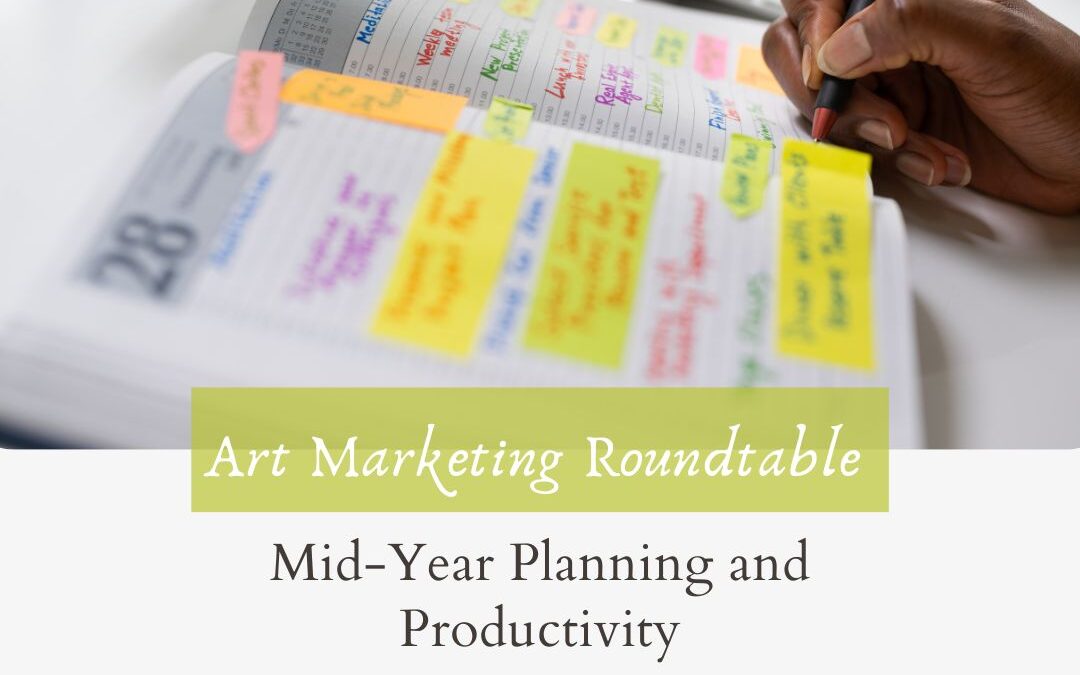
by Rebecca Sciullo | Jun 14, 2023 | Learning, Planning, Productivity, Time Management, Tools
How’s Your Year Going?
Do you plan once for your year and then not look at it again for the rest of the year? If you do, you’re not alone. It’s not uncommon to make solid plans and then get so busy with your work that you don’t check back in to assess how things are going.
Or, do you not have a plan but rather roll with things, creating work and putting it out there on your website or social media, hoping something will happen? Again, you’re not alone. The good news is there is always time to start making a plan.
You may have a plan and want to be more productive and assess how to improve things along the way.
For all three of these scenarios, and everything in between, join an upcoming art marketing round table where we will talk about doing a mid-year review for your art business and sharing productivity and planning tips.
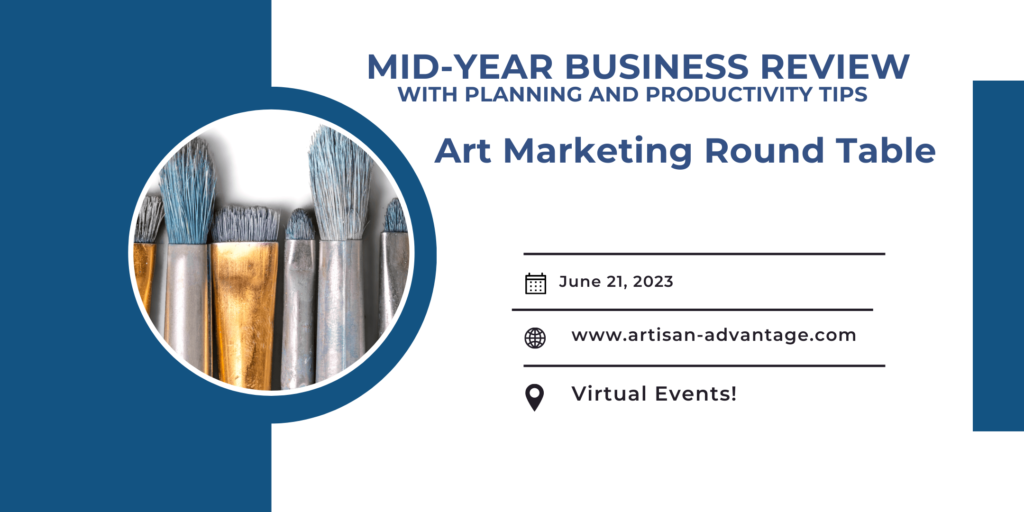
How to do a Mid-Year Review for Your Art Business
Planning is for more than just the beginning of the year. Artists should periodically take stock of how things are going and where they need to adjust their plans. Do this with a mid-year review. And, if you’ve never made a plan for your business, you don’t have to wait for the beginning of the year to start. Instead, learn strategies to get started with art business planning at any stage of the game.
This art marketing round table will focus on a mid-year review of your art business. We will discuss the review process and areas you should consider when going through this process. Discussion points will include assessing your performance, systems, and goals over the past six months. Then, take that information to determine areas of adjustment and improvement for the rest of the year. This comprehensive evaluation will guide your decision-making in growing a vibrant art business. Going through this process will help you to re-evaluate and clarify goals, optimize your practices, and foster a plan for business growth.
We will also discuss productivity and time management techniques.
Art Marketing Round Table: Mid-Year Planning – Wednesday, June 21, 2023
3:00 pm EST/12:00 pm Pacific
https://www.eventbrite.com/e/640713139247
Free Event to Help Your Art Business
This event is free, but space is limited.
For more information about upcoming round tables and other resources to help with your art marketing, please join my email newsletter.

by Rebecca Sciullo | Oct 14, 2022 | Events, Learning, Planning
Art Marketing Roundtables
Thank you for the response to the Art Marketing Roundtables survey. Many ideas were shared for topics to cover, and I had trouble deciding where to start. So, since the end of the year is at hand, it would be good to focus on 2023 art business planning strategies.
2023 Planning Strategies for Your Art Business
 Planning for the year ahead is a task you should do well before January 1st arrives. So start your year with momentum by getting a head start before the holidays.
Planning for the year ahead is a task you should do well before January 1st arrives. So start your year with momentum by getting a head start before the holidays.
While the roundtables are open-ended discussions, I will have some prepared material to get things going. Some of the things on the agenda will include:
How to do a year-end review.
Setting goals for the new year.
Planning strategies to implement in 2023.
Discussion during these strategies will also help to craft future topics for 2023.
Two sessions are scheduled to accommodate different schedules. Each one has limited space, so register soon and please sign-up for one session only.
Art Marketing Roundtables – Register Here
Thursday, November 10th, 2022
10:00 am Eastern Standard Time
Register Here
Tuesday, November 15th, 2022
7:00 pm Eastern Standard Time
Register Here
I look forward to seeing you soon!

by Becky Sciullo | Dec 1, 2021 | Planning, Productivity
It’s December 1st! Make this last month of the year count.
Year-end reviews and planning for next year are always a hot topic this time of year, and I encourage you to do that.
In addition to a year-end review and planning for the next year, there is one critical activity I’ve got in the habit of doing every year. This activty ensures that I hit the ground running in January. It also helps me stay on track during a month typically filled with holiday events, parties, and travel. I like to refer to it as a “home-stretch” plan.

What does this “home stretch” plan entail?
As the year is coming to a close, a home stretch plan is simply a quick list of things that I would like to accomplish before the end of the year. I consider outstanding projects that I would like to wrap up. Then, I think about things I would like to have in place when I hit the ground running in January.
Before Thanksgiving, I sat down to figure out my “home stretch plan” and came up with the following priorities for the next four weeks. Some of the things on my plan included:
Make health a priority with healthy eating and exercise, mindful of the many opportunities coming up to indulge.
Helping my daughter tie up some loose ends regarding her post-graduate plans after high school.
Finish a product that I’ve been working on for too long now. It’s time to get it done.
Finally, make headway with or possibly (but realize it might not be realistic) complete my new website.
Keep it Simple
I like to keep it simple. Yes, I have holiday planning and other things to do, but these are the four things that I am focusing on going into the New Year. I use it as a reference to make sure I make time count during this busy month.
It doesn’t take long to do. Give some thought to your “home stretch plan” today so you can make these next four weeks count and hit the ground running in January. Leave yourself plenty of room for rest, relaxation, and holiday cheer, but help yourself get a leg up so you will feel ahead of the game on New Years Day.
Photo by Miguel A. Amutio on Unsplash
by Becky Sciullo | May 26, 2021 | Planning
Recently, a venue approached artist Robert Yonke to have a show later this year. It’s always exciting when a gallery offers an artist a solo exhibition opportunity, and a first assumption is usually of course. Yet, after reviewing the calendar and his current inventory, we decided to pass.
Why would any artist turn down an opportunity for a live in-person solo show after the year we just had?
The truth is, he sold a good bit of work throughout 2020 into this year, and there wasn’t enough time for him to build up a quality body of work to fill the space in time. As an artist that does not work well under pressure, it could have been counterproductive for business this year. So, we asked to schedule it for a later date, and the gallery thankfully accepted our request.
The moral of the story.
 Sometimes you have to say no. And, it is perfectly Ok. When presented with a chance to show work, it’s easy to want to jump right at the opportunity. But, you have to consider the long game, your current goals, and whether or not it will work in the overall big picture of your business.
Sometimes you have to say no. And, it is perfectly Ok. When presented with a chance to show work, it’s easy to want to jump right at the opportunity. But, you have to consider the long game, your current goals, and whether or not it will work in the overall big picture of your business.
A Shameless Plug
I’m proud to say that because we have relied heavily on a consistent art marketing system, he sold art during the pandemic without missing too much of a beat – even though Covid canceled his largest in-person biggest selling event of the year. Going into the pandemic with the system already in place made a big difference for him.
When Does it Make Sense to Say No?
There are times when you should say no in your art business. Here are some ideas as to when this might make sense for you:
When you need to reduce your stress level.
If you feel overwhelmed and overcommitted, you might consider a pause on all new activities and commitments until you can assess your situation and figure out which activities and events should take precedence. Your decision does not have to be final, and you can consider a temporary “no,” as with Robert’s show.
When it Disrupts a Routine that is Working for You
If you have found a routine that is working and bringing you results, you might want to say “no” if the new activity will disrupt what you are currently doing. You can say yes when you can figure out a way to add the commitment alongside your successful routine.
When You Don’t Have Time To Prepare
While perfection can be the enemy of progress, you also don’t want to be woefully underprepared for an opportunity. Take a good look at your calendar and timeline before committing to a new activity. The worst thing would be to be unprepared and make a poor showing.
When It’s Not a Good Fit
Sometimes opportunities present that are not a good fit for your work or your business goals. Having a solid vision of where you want your business to go will help you identify whether an opportunity is one that you should take.
Your time is valuable! This post isn’t to encourage you to say no but rather to be discerning and thoughtful about how you move forward in your business. And then, you are able to say yes confidently when the time is right.
Share Your Story
Do you have an example of a time when it made sense for you to say no? I’d love to hear about it. Please send me a note at becky@artisan-advantage.com.
Photo by Gemma Evans on Unsplash

 This post contains affiliate links which means I receive a small commission if you make a purchase using the link. For more information, see my full terms here.
This post contains affiliate links which means I receive a small commission if you make a purchase using the link. For more information, see my full terms here. 